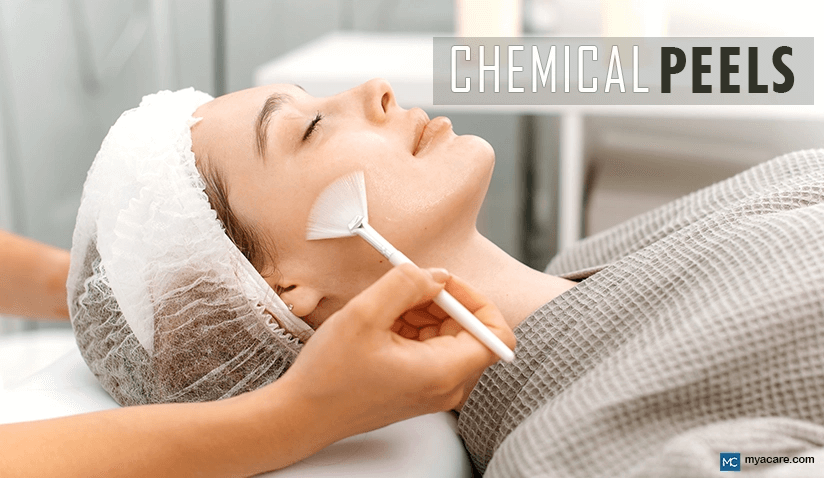The Art of Chemical Peels

What is a Chemical Peel and What Does It Do
A chemical peel is a minor procedure done by a dermatologist wherein a chemical is applied onto the skin, causing “controlled” injury to the epidermis and/or dermis. This stimulates collagen remodeling and accelerates the natural process of exfoliation, which can help achieve an aesthetic and cosmetic improvement.
Classification of Chemical Peels
Chemical peels can be classified according to the depth or level of the skin affected. Peels are traditionally grouped into superficial, medium, and deep chemical peels. Superficial peels wound the epidermis. Medium-depth peels can reach the level of the papillary and upper reticular dermis. Deep chemical peels cause injury to a great portion of the reticular dermis.
Chemical Peeling Agents
There are various chemical peeling agents. Some of these include:
SUPERFICIAL PEELS
- Salicylic acid
- Trichloroacetic acid (TCA)
- Tretinoin peels
- Jessner and Modified Jessner solution
- Glycolic acid
- Pyruvic acid
MEDIUM-DEPTH PEELS
- TCA 50%
- Solid CO2 + TCA 35%
- Jessner solution + TCA 35%
- Glycolic acid 70% + TCA 35%
DEEP PEELS
- Phenol 88%
What are the Indications for Chemical Peeling?
Superficial peels are indicated for:
- Acne
- Post-inflammatory hyperpigmentation
- Melasma
- Mild photodamage
- Fine textural concerns
Medium-depth peels are indicated for:
- Mild to moderate photoaging
- Pigmentary disorders
- Lentigines
- Rhytides (wrinkles)
- Actinic keratosis
Deep chemical peels are indicated for:
- Severe photoaging
- Deep wrinkles
Pre- and Post-peel Preparation
Prior to getting a chemical peel, it is important to visit your dermatologist for an evaluation of your skin problems, as peels are dependent on multiple factors such as the patient’s skin type, the concentration of the peeling agent, the number of coats applied, what is used to apply the peel (brush, gauze, cotton, etc.), the location on the face, contact time, amount of photodamage, and many more.
BEFORE PEEL
In preparation for chemical peeling, dermatologists can advise you to apply certain medications, such as retinoids or hydroquinone, weeks or days before peeling (to be discontinued 3 days before peel date), as well as pretreatment for any possible viral infections. It is also advised to avoid sun exposure.
After cleansing the face, the peeling agent will be applied.
AFTER PEEL
For any discomfort after peeling, ice packs or cold compresses may be used. It is advised to cleanse the skin with a gentle facial cleanser up to 4x/day to prevent infections. Moisturizing lotion and sunscreen may be used after 3 days, and sun exposure should be avoided. Manually picking on or peeling the skin is not encouraged. Depending on the peeling agent used, healing should take around 1-2 weeks for superficial peels, and more for medium-depth to deep peels.
Complications of Chemical Peeling
Some complications after chemical peeling include:
- Infections (bacterial, viral, fungal)
- Persistent redness of the skin
- Delayed wound healing
- Itch
- Post-inflammatory hyperpigmentation and other pigmentary changes
- Contact dermatitis
- Milia
- Acne
- Scarring (for medium-depth to deep peels)
Darker skin types would benefit more from superficial peels, as medium-depth to deep peels can cause post-inflammatory hyperpigmentation.
Conclusion
Chemical peels can treat a variety of skin conditions, ranging from acne to melasma, and even photoaging. It is important to consult with a dermatologist beforehand for proper evaluation and peel selection. Great care and preparation should be done pre- and post-peeling to limit the occurrence of complications and other side effects.
To search for the best health providers for dermatology in Croatia, Germany, Greece, Italy, Malaysia, Singapore, Slovakia Spain, Thailand, The UAE, the UK, and the US, please use our free search engine.
To search for the best healthcare providers worldwide, please use the Mya Care search engine.
Dr. Lauren Livelo is a board-certified dermatologist from the Philippines. She has a degree in Medicine from the University of the East Ramon Magsaysay Memorial Medical Center, and has completed her dermatology residency training in the Research Institute for Tropical Medicine. Aside from her private practice, she enjoys writing about skin care and diseases of the skin.
References:
Featured Blogs



